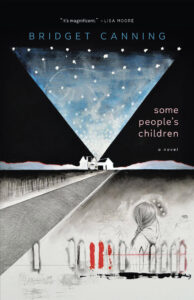A Look Inside Our Spring Issue
March 2021
One of my all-time favourite Ted Talks is the late, great Sir Ken Robinson’s 2006 lecture, “Do Schools Kill Creativity?” For a few years, this moving speech was required viewing in my introductory writing courses where it always inspired intense in-class dialogue, for, as Robinson says, education – in particular one’s own education – is something that “runs deep with people.” As is made obvious in the talk’s title, Robinson does not have much good to say about an education system he believes imprints upon students as early as possible an intense fear of being wrong and ingrains in them the belief that “mistakes are the worst things you can make.” In sharing Robinson’s talk, which is actually quite positive and inspiring (as are my discussions of it, I would argue), I have learned that this early inimical instance of having one’s (often innocent and minor) error elevated to a more damning and personal failure is common and foundational and indeed still “runs deep” within many of us. I thought of Robinson’s talk often as I read Bridget Canning’s Some People’s Children. For while there is much said (and, indeed, much more left unsaid) to young protagonist Imogene Tubbs that she carries with her as she grows through the bildungsroman that is Canning’s second novel, one of the neater narrative nuances is how Imogene retains a grade school classroom lesson and, perhaps unconsciously, permits it to influence the way she frames her world and how she plots and positions her place and possibilities within it.
When Imogene is about eleven-years-old, attending school in the (fictional) coastal community of St Felix’s, NL, her teacher, Sister Patricia, “gives an assignment which everyone fails.” The assignment is a list of directions beginning with “1. Read all the instructions before doing anything” and ending with “10. Wait for the teacher to say go before doing directions 2 to 9.” Of course, directions 2 to 9 instruct students to do all sorts of jumping and spinning and clapping, and, predictably, “Everyone hops and bops and laughs” without first reading the critical tenth direction on the list, after which “Sister Patricia announces they have all failed because they didn’t read and pay attention to the first and last directions.” While this instance is not presented overtly as a psychologically damaging or identify influencing moment, Imogene does adhere obsessively to lists for the rest of the narrative, using them not only to record options and facts but to legitimize herself, her worth, and her existence. There is always more at stake in Imogene’s lists than a sequence of tasks to be completed or an itemization of truths. One senses that Imogene’s earlier carelessness in attending to the particulars of Sister Patricia’s instructions has impressed upon her a reverence for the power of a list and how it can protect against failure and reify knowledge to the point of guarding against erasure. One of the earliest mental lists Imogene compiles are the “four things” she knows about the father she has never met; his absence marking her an always already a fallen, failed creature in a community where everyone is identified as someone’s child. This early list, which is as much about what Imogene does not know as what she does, contains the mysteries that drive Some People’s Children:
- Her father’s name is Anthony Green. His name is on her birth certificate.
- He was a young fisherman who worked on the crab boats for a season. He and Maggie started going out. She told him she was older than what she was. When he found out she was underage, he disappeared.
- Nan sent letters to his old employer looking for him. There was no response…
- Anthony told Maggie he was from Port aux Basques, but according to Nan, no one there named Green knows anything about him.
Imogene’s use of lists is one of the more brilliant aspects of Canning’s novel. The lists grow in complexity and shift in priority as Imogene ages from rural preteen to transplanted urban university undergrad and always capture an authentic voice and sensibility. When she is suspended in Grade Nine for giving her tormentor, Liam Lundrigan, a well-deserved beating with a hockey stick, Imogene plots a course for what she thinks her immediate life will be as a sort of outport gunslinger who must be wary of “Liam’s revenge,” what she sees as the inevitable showdowns with other girls who “like a racket,” and the repercussions of having a reputation as a “Crazy Person.” Imogene has a list of questions for her mother, Maggie, who was fifteen when she gave birth to Imogene, has moved to Ontario, and has left the raising of her daughter to her mother, Imogene’s Nan. The list undergoes edits and evolutions as it grows with Imogene, beginning always with a child’s questions about her father but culminating eventually with a young woman’s exasperated “WHY AM I NOT ALLOWED TO KNOW ANYTHING?!!!!!”
Used improperly, these lists could be a little hokey or a little, you know, Judy Blume (not that there’s anything wrong with YA), but Canning uses them to great affect here. The lists provide an entrance into Imogene’s heart and mind, her fears, and her sense of humour. They are critical components in Canning’s construction of a flawed and fantastic protagonist for which readers will grow to care deeply.
Some People’s Children is published by Breakwater Books ($22.95 250 pages)

See the full review – and lots more! – in Spring 2021 NQ, publishing April 1.




